Tuesday, April 6th 2021

Intel Announces 10 nm Third Gen Xeon Scalable Processors "Ice Lake"
Intel today launched its most advanced, highest performance data center platform optimized to power the industry's broadest range of workloads—from the cloud to the network to the intelligent edge. New 3rd Gen Intel Xeon Scalable processors (code-named "Ice Lake") are the foundation of Intel's data center platform, enabling customers to capitalize on some of the most significant business opportunities today by leveraging the power of AI.
New 3rd Gen Intel Xeon Scalable processors deliver a significant performance increase compared with the prior generation, with an average 46% improvement on popular data center workloads. The processors also add new and enhanced platform capabilities including Intel SGX for built-in security, and Intel Crypto Acceleration and Intel DL Boost for AI acceleration. These new capabilities, combined with Intel's broad portfolio of Intel Select Solutions and Intel Market Ready Solutions, enable customers to accelerate deployments across cloud, AI, enterprise, HPC, networking, security and edge applications."Our 3rd Gen Intel Xeon Scalable platform is the most flexible and performant in our history, designed to handle the diversity of workloads from the cloud to the network to the edge," said Navin Shenoy, executive vice president and general manager of the Data Platforms Group at Intel. "Intel is uniquely positioned with the architecture, design and manufacturing to deliver the breadth of intelligent silicon and solutions our customers demand."
3rd Gen Intel Xeon Scalable Processors
Leveraging Intel 10 nanometer (nm) process technology, the latest 3rd Gen Intel Xeon Scalable processors deliver up to 40 cores per processor and up to 2.65 times higher average performance gain compared with a 5-year-old system. The platform supports up to 6 terabytes of system memory per socket, up to 8 channels of DDR4-3200 memory per socket and up to 64 lanes of PCIe Gen4 per socket.
New 3rd Gen Intel Xeon Scalable processors are optimized for modern workloads that run in both on-premise and distributed multicloud environments. The processors provide customers with a flexible architecture including built-in acceleration and advanced security capabilities, leveraging decades of innovation.
Intel Xeon Scalable processors are supported by more than 500 ready-to-deploy Intel IoT Market Ready Solutions and Intel Select Solutions that help to accelerate customer deployments—with up to 80% of our Intel Select Solutions being refreshed by end of year.
Industry-Leading Data Center Platform
Intel's data center platforms are the most pervasive on the market, with unmatched capabilities to move, store and process data. The latest 3rd Gen Intel Xeon Scalable platform includes the Intel Optane persistent memory 200 series, Intel Optane Solid State Drive (SSD) P5800X and Intel SSD D5-P5316 NAND SSDs, as well as Intel Ethernet 800 Series Network Adapters and the latest Intel Agilex FPGAs. Additional information about all these is available in the 3rd Gen Intel Xeon Scalable platform product fact sheet.
Delivering Flexible Performance Across Cloud, Networking and Intelligent Edge
Our latest 3rd Gen Xeon Scalable platform is optimized for a wide range of market segments—from the cloud to the intelligent edge.
New 3rd Gen Intel Xeon Scalable processors deliver a significant performance increase compared with the prior generation, with an average 46% improvement on popular data center workloads. The processors also add new and enhanced platform capabilities including Intel SGX for built-in security, and Intel Crypto Acceleration and Intel DL Boost for AI acceleration. These new capabilities, combined with Intel's broad portfolio of Intel Select Solutions and Intel Market Ready Solutions, enable customers to accelerate deployments across cloud, AI, enterprise, HPC, networking, security and edge applications."Our 3rd Gen Intel Xeon Scalable platform is the most flexible and performant in our history, designed to handle the diversity of workloads from the cloud to the network to the edge," said Navin Shenoy, executive vice president and general manager of the Data Platforms Group at Intel. "Intel is uniquely positioned with the architecture, design and manufacturing to deliver the breadth of intelligent silicon and solutions our customers demand."
3rd Gen Intel Xeon Scalable Processors
Leveraging Intel 10 nanometer (nm) process technology, the latest 3rd Gen Intel Xeon Scalable processors deliver up to 40 cores per processor and up to 2.65 times higher average performance gain compared with a 5-year-old system. The platform supports up to 6 terabytes of system memory per socket, up to 8 channels of DDR4-3200 memory per socket and up to 64 lanes of PCIe Gen4 per socket.
New 3rd Gen Intel Xeon Scalable processors are optimized for modern workloads that run in both on-premise and distributed multicloud environments. The processors provide customers with a flexible architecture including built-in acceleration and advanced security capabilities, leveraging decades of innovation.
- Built-in AI acceleration: The latest 3rd Gen Intel Xeon Scalable processors deliver the AI performance, productivity and simplicity that enable customers to unlock more valuable insights from their data. As the only data center CPU with built-in AI acceleration, extensive software optimizations and turnkey solutions, the new processors make it possible to infuse AI into every application from edge to network to cloud. The latest hardware and software optimizations deliver 74% faster AI performance compared with the prior generation and provide up to 1.5 times higher performance across a broad mix of 20 popular AI workloads versus AMD EPYC 7763 and up to 1.3 times higher performance on a broad mix of 20 popular AI workloads versus NVIDIA. A100 GPU.
- Built-in security: With hundreds of research studies and production deployments, plus the ability to be continuously hardened over time, Intel SGX protects sensitive code and data with the smallest potential attack surface within the system. It is now available on 2-socket Xeon Scalable processors with enclaves that can isolate and process up to 1 terabyte of code and data to support the demands of mainstream workloads. Combined with new features, including Intel Total Memory Encryption and Intel Platform Firmware Resilience, the latest Xeon Scalable processors address today's most pressing data protection concerns.
- Built-in crypto acceleration: Intel Crypto Acceleration delivers breakthrough performance across a host of important cryptographic algorithms. Businesses that run encryption-intensive workloads, such as online retailers who process millions of customer transactions per day, can leverage this capability to protect customer data without impacting user response times or overall system performance.
Intel Xeon Scalable processors are supported by more than 500 ready-to-deploy Intel IoT Market Ready Solutions and Intel Select Solutions that help to accelerate customer deployments—with up to 80% of our Intel Select Solutions being refreshed by end of year.
Industry-Leading Data Center Platform
Intel's data center platforms are the most pervasive on the market, with unmatched capabilities to move, store and process data. The latest 3rd Gen Intel Xeon Scalable platform includes the Intel Optane persistent memory 200 series, Intel Optane Solid State Drive (SSD) P5800X and Intel SSD D5-P5316 NAND SSDs, as well as Intel Ethernet 800 Series Network Adapters and the latest Intel Agilex FPGAs. Additional information about all these is available in the 3rd Gen Intel Xeon Scalable platform product fact sheet.
Delivering Flexible Performance Across Cloud, Networking and Intelligent Edge
Our latest 3rd Gen Xeon Scalable platform is optimized for a wide range of market segments—from the cloud to the intelligent edge.
- For the cloud: 3rd Gen Intel Xeon Scalable processors are engineered and optimized for the demanding requirements of cloud workloads and support a wide range of service environments. Over 800 of the world's cloud service providers run on Intel Xeon Scalable processors, and all of the largest cloud service providers are planning to offer cloud services in 2021 powered by 3rd Gen Intel Xeon Scalable processors.
- For the network: Intel's network-optimized "N-SKUs" are designed to support diverse network environments and optimized for multiple workloads and performance levels. The latest 3rd Gen Intel Xeon Scalable processors deliver on average 62% more performance on a range of broadly-deployed network and 5G workloads over the prior generation. Working with a broad ecosystem of over 400 Intel Network Builders members, Intel delivers solution blueprints based on 3rd Gen Intel Xeon Scalable processor "N SKUs," resulting in accelerated qualification and shortened time-to-deployment for vRAN, NFVI, virtual CDN and more.
- For the intelligent edge: 3rd Gen Intel Xeon Scalable processors deliver the performance, security and operational controls required for powerful AI, complex image or video analytics, and consolidated workloads at the intelligent edge. The platform delivers up to 1.56 times more AI inference performance for image classification than the prior generations.
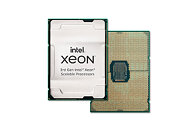

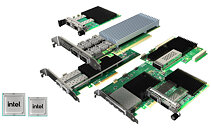
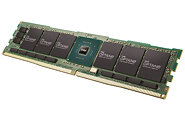

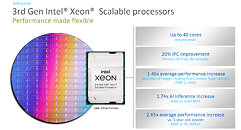
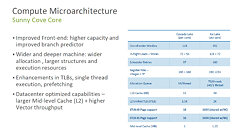
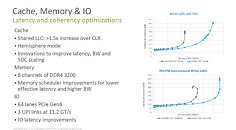
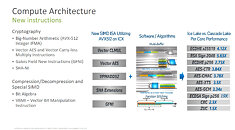
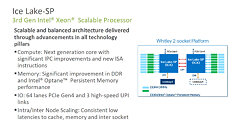
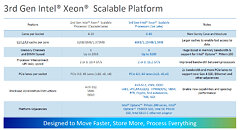
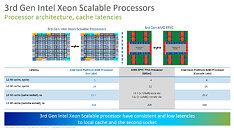
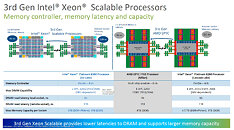
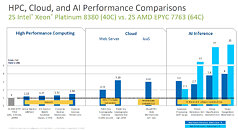
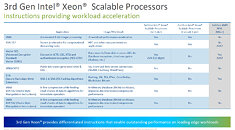
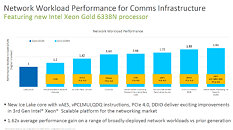
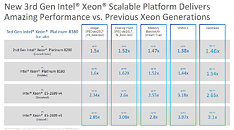
65 Comments on Intel Announces 10 nm Third Gen Xeon Scalable Processors "Ice Lake"
I see the racist tones in it as well, but its going to end in fighting so lets stop it now.
24TBs of RAM on a last-generation Cascade Lake 8-way socket product. Xeon Platinums are for BIG systems. You don't go 8-socket unless you're going super-super big.On the other hand, this here seems like I've made a mistake. At only 2S, these chips will never go into a 8-way SuperServer. So 4TBs I guess max (typically anyway).
Now that's odd: for Intel to only target 1S and 2S with this technology. You'd think that Intel would push their higher-margin 8-socket designs, which scale more vertically than AMD systems can and therefore fills a niche that AMD doesn't even attempt to tackle. Or maybe Intel knows that they're the only one with any game there, so there's no point even upgrading it to Ice Lake?
Old Cooper Lake Xeons support up to 1.12TB (H models) or 4.5TB (HL models).
Ice Lake Xeons support up to 6TB.
US cars are generally considered not fantastic elsewhere in the world, its a good example of how that works. Its a rare occurrence seeing one over here for obvious reasons. Too heavy, too costly, and generally not of great quality, while the unique selling points don't really work outside the US.
If money is no object, the US can make fantastic things. If it has to be competitive in the global market though? There really isn't much export that successful, except for digital services and fintech - and let's not begin to unravel those cesspools to see where the value really comes from. The rest? Base resources to make things ;) Hardly high tech.
My point: the global market is a fantastic thing, even if the current state of it is one of bad balance. It leads to overall better product and more/fair competition. And more importantly, as long as you need each other for trade, you're not shooting.
Doing workstation type tasks.
ie. Rendering, Music Production, Numerical Optimization.
Sure games are fun, but a review that is focused on work would be useful.
What is best price of Ryzen 9 5950X?
5950X will do a good job performance wise, as long as you are not bottlenecked by memory bandwidth or other IO. But it will not offer the stability of a Xeon. I would advice waiting for the Xeon W lineup, which has much higher clock speeds and probably different pricing.That may be varying from region to region. In my country only 5800X has been in stock.
The W line up will probably cost more .
I used to use xeons, 2687w sandy bridge was the last one. Since the it has been i9's.
Workstations are (or should be) built for a specific purpose. Aggregated performance is irrelevant, what you want to do is looking at benchmarks relevant for the real world tasks you will be performing. Pay extra attention to how the workloads scale with increasing core count, having additional cores beyond that is pointless. Also notice whether the workloads are CPU or IO bound.
The AM4 lineup has several aspects to consider for "semi-pro" or pro users. Ryzen 9 5950X (and to some extent 5900X) are often "pointless" for real world uses, as there are very few real world workloads scaling well beyond 6-8 cores, especially without more memory channels. They are more relevant for benchmarking than anything else, and would have made so much more sense as Threadrippers. There may be a few exceptions, such as rendering, so you might want to look into that. Another issue is that we are still waiting for AMD to finally create stable firmware, 5 months in...
Additionally, there is IO and expansion (This also applies to LGA1200), particularly your storage needs. Especially with M.2 drives, most workstations probably needs space for at least two of these. Then probably some hard drives. With AM4 and LGA1200 you need to read the fine print in the motherboard manuals about which combinations of PCIe/M.2 slots and SATA ports is possible, there are usually compromises there. I also prefer to have a free PCIe 4x slot for future 10G networking etc.
Reliability is always a tough one. People don't need expensive Xeons for gaming, but for a serious workstation it should at least be a consideration.